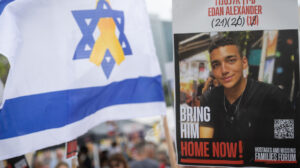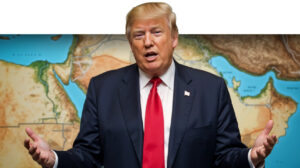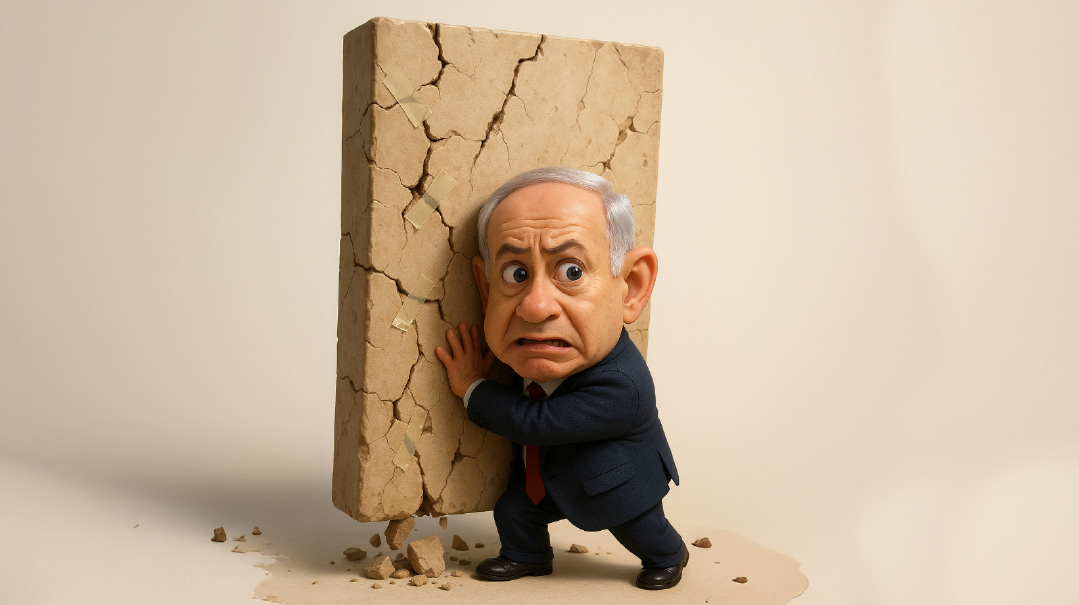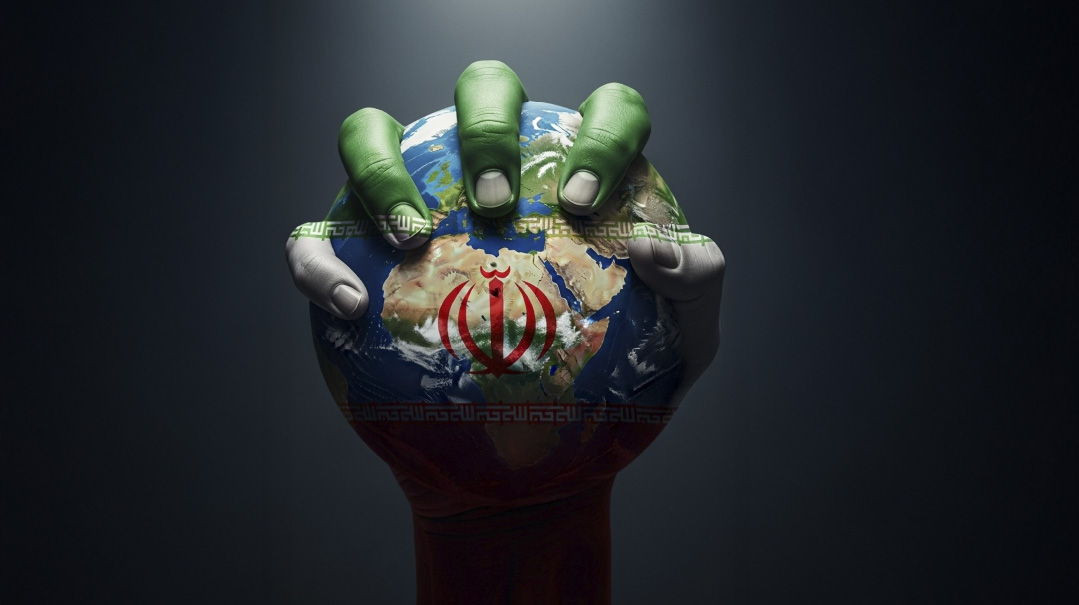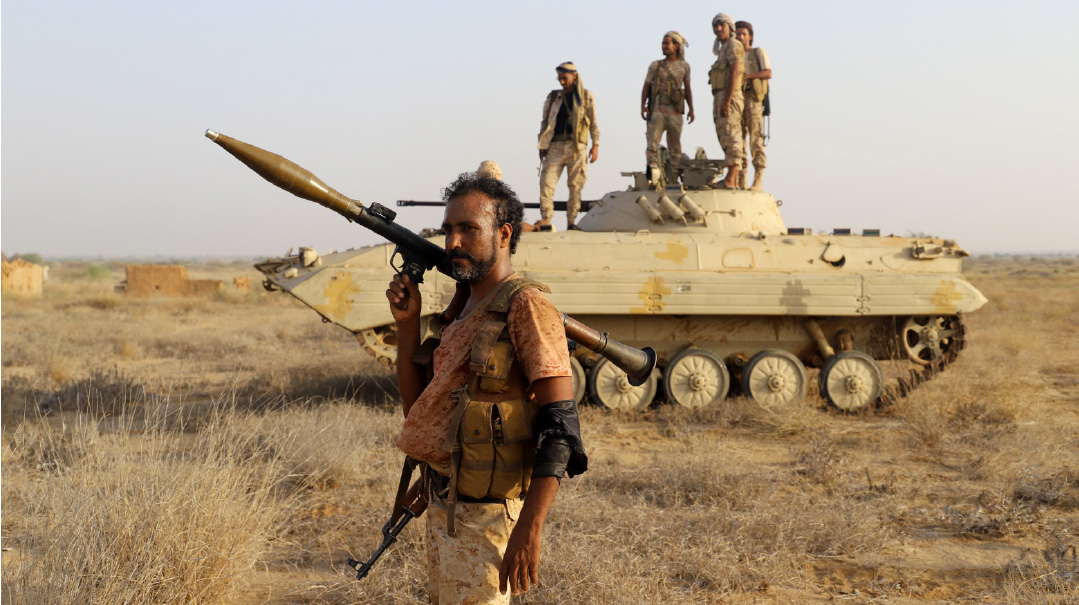Southern Squatters
| June 22, 2021The Bedouin land grab at the heart of Naftali Bennett's coalition

Photos: Flash90
On the surface, the swearing-in ceremony in the Knesset last Sunday for Mansour Abbas, leader of the Arab Ra’am party, was just one of many that took place as Naftali Bennett’s government assumed power. A smiling MK stepped up to the podium, was handed the text of his declaration of allegiance, recited his own and his parents’ names, and vowed “to uphold the State of Israel and its laws.”
But in reality, the ceremony was nothing less than a political earthquake.
The most obvious result was that an Arab party had joined an Israeli governing coalition the first time. But behind that headline lay a more consequential impact: the price tag. For the “change coalition,” convincing Ra’am, the southern branch of the Islamic Movement in Israel, to recognize the Jewish state, join its government, and vow to uphold its laws, came at a steep cost. The NIS 50 billion allocated to the Arab sector by the coalition deal — equivalent to half a century’s worth of funding for the chareidi sector — shocked many Israelis.
But there is an additional price to be paid. To grasp the real total that Naftali Bennett paid for Ra’am’s political support, you need to take a trip south to the Negev Desert, where vast areas have been swallowed in recent years by illegal Bedouin building. Aside from chairmanship of the Knesset’s Interior Committee and of the Arab Affairs Committee, Ra’am leader Mansour Abbas secured a clause stipulating the legalization of three Bedouin villages in the Negev as well as a review of the status of 11 others.
“When you imagine the founding of a village, you probably picture architects and engineers sitting down at a table, charting out the boundaries, planning the infrastructure, working out the details,” says Meir Deutsch of Regavim, an NGO contesting illegal construction in the area. “But in the Negev, things work differently. You take a huge tract of land that has hundreds or thousands of homes scattered across it, you draw an imaginary blue line around it, and bingo — you have a new village. Does this solve the water and electricity supply problems? Or problems with faulty construction? No. Is it a healthy use of the land? Of course not! Does it reclaim Israel’s stolen national lands? No!”
The coalition deal with Ra’am stipulates the cancellation of fines for illegal construction in the Negev, freezes enforcement of building regulations in the area for four years, and halts demolition of illegal construction completed before January 1, 2021 — even if demolition orders have already been issued.
Just how critical an issue it is was brought home by the last-minute drama surrounding Ra’am MK Said Al-Harumi, himself a Bedouin resident of the Negev, at the new government’s investiture. Despite committing to support the new government, Al-Harumi abstained from the vote, because that same morning, Israeli police inspectors showed up in the village of Bir Hadaj in the Negev to issue demolition orders for illegal construction. Al-Harumi’s move was more strategic than tactical, and won broad support from the Bedouin community.
So as Israel’s new government attacks the country’s long-established religious status quo, it’s being propped up by an Islamist party determined to legalize the massive fire sale in Israel’s southern hinterlands.
It’s not something that Regavim’s Meir Deutsch would have predicted from former settlement supporter Naftali Bennett. “It’s nothing less than a death sentence for the Jewish presence in the Negev.”
Lawless Lands
To get a sense of the scale of the Bedouin takeover of the Negev, let’s start with the three villages specified in the coalition deal, which are set to be legalized without delay.
Abda, lying next to Ein Avdat, has a population of 500 and extends over no less than 5,300 dunams (around 1,300 acres), not counting nearby pasture grounds. Rakhma, near Yerucham, has a population of 1,500 people, and extends over “a mere” 2,500 dunams (600 acres). Khashm al-Zena, at the side of the road from Be’er Sheva to Dimona, is the largest of the three, with a population of 5,000, and extends over 4,300 dunams (about 1,100 acres).
So who benefits from legalizing these villages? In a village such as Khashm al-Zena, for instance, legalization is a much-needed step — but not so much for the Bedouins. They would prefer to build in violation of the law and thereby forfeit eligibility to state services. They know from experience that being eligible for states services doesn’t mean they’ll get the services. And installing infrastructure costs a pretty penny in villages that sprang up haphazardly without the slightest planning.
But the unique problem of Khashm al-Zena is its location straddling the planned route of Highway 6 to the south, from Shoket Junction to HaNegev Junction.
Atiya al-Asam, who heads the regional council for unrecognized villages in the Negev, claims that the three villages specified in the deal have existed for years (according to him, they predate the State of Israel). But because the state has withheld recognition, they aren’t entitled to basic services such as water and electricity, and only a special High Court ruling forced the government to build schools in two of the villages (Rakhma and Khashm al-Zena) and transportation for schoolchildren in the third (Abda).
Al-Asam notes that the Bedouins in the villages straddling the planned route of Highway 6 are willing to come to terms with the transfer of families living in homes that are in the way — as long as they gain recognition in return — but will reject any proposal that involves herding them into population centers such as Rahat and Tel Sheva. It’s not services and infrastructure they care about, he claims, but ownership of the land — “and we won’t give up.”
Off the Grid
The Negev Bedouins have one city — Rahat, with a population of 70,000 — along with six towns: Tel Sheva, Hura, Ar’ara BaNegev, Lakiya, Kseife, and Segev Shalom, with a combined population of another 100,000. Rahat and the other townships cover an area of over 60,000 dunams.
Aside from these official government-built towns, Israel also recognizes 11 other villages that were initially incorporated into one regional council, Abu Basma, but have since been split in two, Neve Midbar and Al-Kasom. These 11 legal villages have a combined population of 20,000 and cover another 60,000 dunams.
But if al-Asam can be believed, there are another 100,000 Bedouins living in 35 unrecognized villages in the Negev, on land covering 350,000 dunams. All in all, the Bedouins claim ownership of an area totaling 589,000 dunams — about 227 square miles, roughly the combined land area of the Bronx, Queens, and Brooklyn.
To al-Asam, this is a modest demand. “The entire Negev is 10 million dunams, and we’re asking for less than 6 percent.”
On the other hand, a Regavim report notes that all the Jewish cities in the Negev combined — Dimona, Arad, Yerucham, Mitzpeh Rimon, and the villages Nevatim and Meitar — cover an area of less than 18,000 dunams. It may not be an entirely fair comparison, as these suburban villages need less space than agricultural settlements, especially those inhabited by a nomadic population. But still, each Bedouin village has far more land than any of the Jewish ones, and if the Bedouins get their wish and all 35 villages are recognized, that inequality will be exacerbated.
Per Ra’am’s coalition agreement, the new government will review the status of at least 11 other villages. And this is what led the Regavim NGO to petition the High Court to force the government to disclose which villages will be reviewed — something the coalition deal, as presented to the Knesset, failed to specify.
A little more than a decade ago, the Goldberg Commission issued its report on the recognition of the Bedouin settlement in the Negev. The report showed that Bedouin claims to ownership of land in the Negev have been rejected again and again, by every court in the land, from district courts to the High Court. In not a few cases where Bedouins claimed to have occupied an area since before the founding of the state, aerial photographs were produced in court showing that the area wasn’t even settled at the time.
The Bedouins counter that the aerial photographs prove nothing, as they are a nomadic population who wander constantly from place to place. What’s clear is that the lands were never registered in the Tabu (Israel’s national lands bureau), nor during Ottoman times or the British Mandate, and no claims on a settlement preceding the state have any basis.
According to the Goldberg Commission’s findings, in 2007 there were more than 50,000 illegally built structures in the Negev, and the number was growing yearly by 1,500 to 2,000, with the authorities doing nothing to prevent illegal construction. This would mean that today there are over 100,000 illegally built structures in the Negev, ranging from tin shacks and huts to sprawling villas.
The commission recommended that a committee be established to examine the issue of the Bedouin settlement and of the ownership of the land, and that the Bedouins’ claims be accommodated to the maximum extent possible, even when they failed to produce evidence of ownership. The proposal was that anyone who laid claim to property in the Negev would be recompensed with half of it, whether in the form of the land itself, or in equivalent land lots or the same value in money.
Former minister Benny Begin, who was put in charge of the issue, fought to get the commission’s recommendations adopted, and went even further, proposing that the state give property claimants the full value of their property, if not the land itself. Then-minister Begin’s proposals were strongly opposed by the Regavim NGO, as well as by elements in the government.
Regavim argued that the Bedouin issue can’t be solved only through benefits, and that sanctions have to be enforced against those who continue expropriating national lands and building illegally. In addition, Regavim demanded that the offer of a settlement in their status has to include a time limitation. Otherwise, what would stop the Bedouins from accepting all the offered benefits and then just continue to take over other lands?
Ultimately, as happens so often in Israeli politics, the government dissolved before reaching a decision on Begin’s proposal. No government since then has taken up the issue. Meanwhile, the situation on the ground has only gotten worse: continued Bedouin takeover of massive tracts of land, in the face of continued government inaction. Action, it seems, is stronger than any government policy.
Islamist Power
Until Israel’s fourth elections, the Ra’am party was unknown to most Israelis, except as part of the Arab Joint List in the Knesset. But as Israel’s political crisis deepened, Ra’am leader Mansour Abbas emerged as a potential kingmaker. A rotund, genial man, his perceived willingness to talk with both left and right led to talk of a new dawn in the relationship between Israel and its Arab minority. Then came the Israeli Arab riots during the Gaza war, some of which featured residents of the Negev’s Bedouin communities, and the harder face of the Ra’am movement came under scrutiny. So what is really behind Abbas’s seeming pragmatism?
Ra’am, the Hebrew acronym for United Arab List, is the political wing of what’s known as the Southern Branch of the Islamic Movement in Israel. In 1996, the Islamic Movement in Israel split in two branches, with a hard-line breakaway faction becoming the Northern Branch and the original, more moderate movement becoming the Southern Branch. The names should be interpreted loosely, as the Northern Branch has supporters in the south while the Southern Branch has supporters in the north.
The split occurred when Sheikh Abdullah Nimar Darwish from Kafr Qassem, the head of the Southern Branch, decided to participate in Israel’s Knesset elections for the first time, forming the Ra’am party under Abdulmalik Dehamshe.
The Northern Branch was led by Sheikh Raed Salah, former mayor of Umm-al-Fahm, who still calls for boycotting Knesset elections and avoiding any form of cooperation with the State of Israel. For years Salah has encouraged Muslims to visit the Temple Mount and opposed any kind of Jewish presence on the site.
The sheikh was also involved in numerous attacks on Israeli soldiers and police officers — the most prominent being his participation in the Turkish passenger ship Mavi Marmara’s attempt to break Israel’s blockade of Gaza. It was due to this that the Northern Branch of the Islamic Movement was banned in Israel in 2015.
As opposed to Salah, the more moderate Darwish urged integration in the state and its institutions, in order to milk them to their maximum extent. That’s the guiding principle of Mansour Abbas, who led Ra’am out of the Arab Joint List and became the balance of power in the 24th Knesset.
The Islamic Movement isn’t just a political group. First and foremost, it is a social organization providing welfare, medical, and legal services to the Muslim population, as well as organizing Quranic studies, conferences, lectures, and so on. Essentially, this is the source of the movement’s power, and that’s what Mansour Abbas relied on when he decided to run for the Knesset independently.
Does the Southern Branch accept the existence of the State of Israel? Not necessarily. Just look at the biography of its founder, Sheikh Darwish. The start of his career came with the founding of the terror group Osrat al-Jihad (the families of jihad), which led to his arrest in 1981. He was released as part of the Jibril agreement in 1985.
While he was serving his sentence, Darwish changed his view and decided that the way to resist Israel was to integrate and exploit its weaknesses from within. Despite close ties with Hamas founder Sheikh Ahmed Yassin, Darwish opposed the founding of Hamas and tried to convince Yassin that the was on the wrong path.
Ibrahim Sarsur, who succeeded Darwish as head of the Southern Branch and Dehamshe as leader of Ra’am, said in an interview to an Arab Israeli newspaper: “We’re believers in Islam, we believe in the rule of the Caliphate, and we don’t accept the separation between church and state.”
In addition, Sarsur fiercely condemned the ideas of Zionism. In the wake of this, the right-wing parties disqualified Sarsur from running in the electoral commission, on grounds that he rejected Israel’s character as a Jewish and democratic state. It hardly needs to be said that the High Court struck down the decision and restored Sarsur’s political rights, among other reasons because Sarsur denied making the remarks attributed to him.
So when Mansour Abbas wanted to approve the coalition deal, he had to convene a meeting of the Southern Branch of the Islamic Movement’s spiritual leadership, the shura — just like any other religious party.
The head of the shura, and thus of the Southern Branch of the Movement, is Sheikh Hamed Abu Daabas from Rahat, born in 1961 and a graduate of Ben-Gurion University in Be’er Sheva. Daabas is one of the most vocal supporters of Abbas’s strategy of entering the government. This is what he had to say about it: “It’s a complicated situation, there are many challenges, and nothing is certain but this — behind the decision lies a brave and ambitious Arab leadership that took in the political situation, charted a path, and brought about an earthquake not just for the Arab sector in Israel but on an international scale.”
But behind the doublespeak on the Israeli state — trading cooperation for large-scale funding — the Southern Branch hasn’t changed its stripes when it comes to core beliefs. Sheikh Abu Daabas described Operation Guardian of the Walls as “a moral victory for the Palestinian resistance,” claiming that the operation caused a global change in the balance of power between Israel and the Palestinian resistance. Daabas and his men didn’t content themselves with words, but sent a caravan to Gaza with humanitarian aid to the value of NIS 1.5 million the moment the cease-fire was declared. In addition, the Islamic Movement set up a special operations room to coordinate aid to the Arab population in the wake of the recent unrest, offering legal as well as financial help.
Dither and Delay
Massive illegal building aside, the Bedouin should also set alarm bells ringing for another reason: They played an active and central part in the recent Arab riots in mixed cities across the country. A significant share of the rioters in cities such as Lod and Ramle were recently urbanized Bedouins; and violence was conspicuous among the large Bedouin population in the north, where most of their villages are recognized by the state. Apparently hospitality has a price.
So how is it that even as Arab tensions reached a boiling point, Ra’am was willing to join an Israeli coalition? MK Mazen Ghnaim confirms that indeed, “The faction chose a difficult path, and only time will tell if it was the right thing to do.”
According to him, Israel’s 1.7 million Arab citizens face a series of impossible problems: rising crime and violence; land shortages, which have led to young people being unable to afford their own homes (NIS 4 million for a dunam); unemployment and poverty; and a much lower level of infrastructure and public services than is enjoyed by the Jewish sector.
Ra’am understands that the only way to change this is from within, but now the government will have to deliver. “If it turns out that we were mistaken, we won’t hesitate to admit it, and we’ll probably pay a price too.’”
So even as Ra’am eyes the future price of cooperation with the Jewish state, Israel is already paying interest for decades of official neglect, with the Negev having been eaten up dunam by dunam with illegal building.
And with Ra’am now playing kingmakers at the heart of government, the illegal building across the south now has a stranglehold on Israeli politics.
As local Negev council head Atiya Al-Asam, concludes, “It will take some time before we can gauge whether going into the government was the right decision to make. And MK Said Al-Harumi’s decision to abstain from the investiture vote was a warning that if the Bedouin problem isn’t sorted out, the coalition won’t last long.”
(Originally featured in Mishpacha, Issue 866)
Oops! We could not locate your form.


